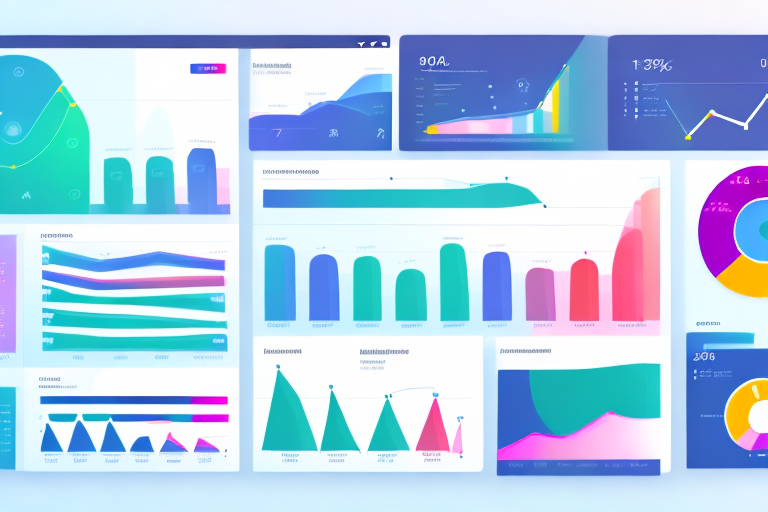In today’s fast-paced and constantly evolving business landscape, digital marketing has become a vital tool for companies looking to maximize their reach and achieve their business objectives. From social media marketing to email campaigns and search engine optimization, the right digital marketing strategy can help you connect with your target audience and boost engagement levels.
Understanding the Basics of Digital Marketing
In today’s digital age, businesses need to have a strong online presence to stay relevant and competitive. This is where digital marketing comes in. Digital marketing refers to the practice of promoting products or services through digital channels, such as search engines, websites, social media, and email campaigns. Its primary goal is to reach and engage with a target audience to drive conversions and build brand awareness.
What is Digital Marketing?
Digital marketing is a broad term that encompasses a range of strategies and tactics to promote products or services online. It includes everything from search engine optimization (SEO) and pay-per-click (PPC) advertising to social media marketing and email campaigns. The key to successful digital marketing is to use a combination of these tactics to reach and engage with your target audience.
The Importance of Digital Marketing in Today’s World
In today’s world, the internet has become the go-to resource for information and communication. This means that businesses need to have a strong digital presence to be visible and relevant, especially since most people are spending an increasing amount of time online. Digital marketing allows businesses to reach their target audience where they are spending their time, and to provide them with valuable information and content that can help to build trust and establish a relationship.
One of the key benefits of digital marketing is that it allows businesses to track and measure their results in real-time. This means that they can quickly adjust their strategy based on what is working and what is not, and make data-driven decisions to optimize their campaigns for maximum impact.
Key Components of a Successful Digital Marketing Strategy
Before launching your digital marketing campaign, it’s important to have a solid plan in place with clear goals and objectives. The following components are essential to the success of any digital marketing strategy:
- Identifying your target audience: Understanding who your target audience is and what their needs and preferences are is essential to creating an effective digital marketing strategy. This will help you to tailor your messaging and content to resonate with your audience and drive conversions.
- Establishing SMART goals: Setting specific, measurable, achievable, relevant, and time-bound (SMART) goals is critical to the success of your digital marketing strategy. This will help you to measure your progress and determine whether your campaign is on track to meet your objectives.
- Aligning your digital marketing strategy with business objectives: Your digital marketing strategy should be aligned with your overall business objectives, such as increasing revenue, generating leads, or building brand awareness. This will ensure that your digital marketing efforts are contributing to the overall success of your business.
- Utilizing the right digital marketing channels: There are a wide variety of digital marketing channels available, including search engines, social media, email, and display advertising. It’s important to choose the channels that are most relevant to your target audience and that will help you to achieve your goals.
- Creating engaging and relevant content: Content is king in the world of digital marketing. Creating high-quality, engaging, and relevant content is essential to attracting and retaining your target audience. This can include blog posts, videos, infographics, and social media content.
By following these key components, businesses can create a comprehensive digital marketing strategy that will help them to reach and engage with their target audience, drive conversions, and build brand awareness.
Setting Clear Goals and Objectives
Setting clear goals and objectives is essential for any successful digital marketing strategy. By defining what you want to achieve, you can create a roadmap for your efforts and measure your progress along the way. Here are some additional tips to help you set clear goals and objectives:
Identifying Your Target Audience
Identifying your target audience is the first step in crafting an effective digital marketing strategy. Understanding who your audience is and what they’re interested in can help you create more targeted and effective messaging that resonates with them. Here are some additional tips for identifying your target audience:
- Conduct market research to learn more about your audience’s behaviors, interests, and demographic characteristics.
- Use social media analytics to gain insights into your audience’s online behavior.
- Develop buyer personas to help you better understand your audience’s needs and motivations.
Establishing SMART Goals
SMART goals are specific, measurable, attainable, relevant, and time-bound. By setting SMART goals, you can create a clear and actionable roadmap for your digital marketing efforts. Here are some additional tips for establishing SMART goals:
- Make sure your goals are specific and clearly defined.
- Use metrics to measure your progress towards your goals.
- Ensure that your goals are realistic and achievable.
- Make sure your goals are relevant to your overall business objectives.
- Set a clear timeline for achieving your goals.
Aligning Your Digital Marketing Strategy with Business Objectives
Aligning your digital marketing strategy with your overall business objectives is crucial for success. By ensuring that your digital marketing efforts are working in concert with your broader business strategy, you can maximize your chances of success. Here are some additional tips for aligning your digital marketing strategy with your business objectives:
- Make sure your digital marketing goals align with your overall business objectives.
- Ensure that your digital marketing efforts are consistent with your brand messaging and values.
- Use data and analytics to measure the impact of your digital marketing efforts on your business objectives.
- Regularly review and adjust your digital marketing strategy to ensure that it’s aligned with your business objectives.
By following these tips, you can set clear goals and objectives for your digital marketing strategy, identify your target audience, and align your efforts with your overall business objectives. This will help you create a more effective and impactful digital marketing strategy that delivers results.
Utilizing the Right Digital Marketing Channels
Marketing is an essential aspect of any business, and in today’s digital age, it’s crucial to utilize the right channels to reach your target audience effectively. Here are some of the most effective digital marketing channels:
Social Media Marketing
Social media marketing is a powerful tool for businesses of all sizes. With billions of active users on social media platforms like Facebook, Twitter, Instagram, LinkedIn, and more, social media marketing can help you build brand awareness, engage with your target audience, and drive traffic to your website.
However, it’s important to note that not all social media platforms are created equal. Depending on your target audience, you may want to focus your efforts on a specific platform. For example, if you’re targeting a younger audience, you may want to focus on Instagram and TikTok. If you’re targeting professionals, LinkedIn may be the best option.
Content Marketing
Content marketing is all about creating valuable and relevant content that’s designed to attract and retain a specific audience. This can take many forms, from blog articles and videos to ebooks and infographics.
One of the benefits of content marketing is that it can help establish your brand as an authority in your industry. By creating high-quality content that provides value to your target audience, you can build trust and credibility.
Email Marketing
Email marketing is a cost-effective way to promote your business and engage with customers. You can use email to send newsletters, promotional offers, updates, and more.
However, it’s important to ensure that your emails are relevant and valuable to your subscribers. Otherwise, they may unsubscribe or mark your emails as spam.
Search Engine Optimization (SEO)
SEO involves optimizing your website and its content to rank higher in search engine results pages (SERPs). This involves researching relevant keywords, creating high-quality content, and optimizing your website’s technical aspects like page speed and mobile-friendliness.
One of the benefits of SEO is that it can drive organic traffic to your website, which can be a cost-effective way to generate leads and sales.
Pay-Per-Click Advertising (PPC)
PPC involves paying for ads that appear in search engine results or on other websites. You only pay when someone clicks on your ad, making this an effective way to drive traffic to your website and generate leads.
However, it’s important to ensure that your ads are relevant and targeted to your audience. Otherwise, you may end up paying for clicks that don’t result in conversions.
By utilizing these digital marketing channels effectively, you can reach your target audience, build brand awareness, and drive traffic to your website. It’s important to experiment with different channels and strategies to find what works best for your business.
Creating Engaging and Relevant Content
The Power of Storytelling
One of the most effective ways to engage with your target audience is by telling stories that resonate with them. People love stories, and a well-crafted narrative can help you connect with your audience on an emotional level.
Content Formats and Types
There are many different types of content you can create, from blog posts and infographics to videos and podcasts. The key is to create content that’s both engaging and relevant to your audience.
Tips for Creating High-Quality Content
When creating content, it’s important to focus on quality over quantity. Here are a few tips to help you create high-quality content that resonates with your audience:
- Focus on your audience’s needs and interests
- Create content that’s relevant and timely
- Invest in professional editing and proofreading
- Experiment with different content formats and types
- Measure your results and adjust your strategy as needed
Conclusion
By following these tips and best practices, you can unlock the power of digital marketing and maximize your reach and results. Remember to stay focused on your audience’s needs and interests, and to measure your progress and adjust your strategy as needed. With the right digital marketing plan in place, you can achieve your business objectives and build a strong and engaging digital presence.
Read next: IT Investment Outcome Impact on Financial Performance

